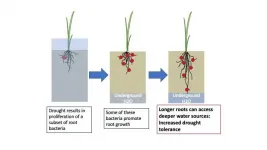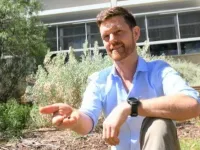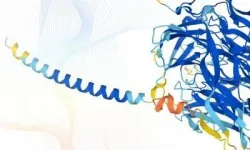(Press-News.org) Newly-hatched pterosaurs may have been able to fly but their flying abilities may have been different from adult pterosaurs, according to a study published in Scientific Reports.
Pterosaurs were a group of flying reptiles that lived during the Triassic, Jurassic and Cretaceous Periods (228 to 66 million years ago). Due to the rarity of fossilised pterosaur eggs and embryos, and difficulties distinguishing between hatchlings and small adults, it has been unclear whether newly-hatched pterosaurs were able to fly.
Darren Naish and colleagues modelled hatchling flying abilities using previously obtained wing measurements from four established hatchling and embryo fossils from two pterosaur species, Pterodaustro guinazui and Sinopterus dongi. The authors also compared these wing measurements with those of adults from the same species and compared the strength of the humerus bone, which forms part of the wing, of three hatchlings with those of 22 adult pterosaurs.
The researchers found that hatchling humerus bones were stronger than those of many adult pterosaurs, indicating that they would have been strong enough for flight. The authors also found that while hatchlings had long, narrow wings suited to long-distance flight, their wings were shorter and broader than those of adult pterosaurs, with a larger wing area relative to hatchling mass and body size. These wing dimensions may have may have made hatchlings less efficient than adult pterosaurs at long-distance travel, but may have resulted in them being more agile fliers, enabling them to suddenly change direction and speed.
The authors speculate that the agile flying style of hatchling pterosaurs may have enabled them to rapidly escape predators and made them better suited to chasing nimbler prey and flying amongst dense vegetation than adult pterosaurs. This could indicate that pterosaurs occupied dense habitats as hatchlings and open environments as adults, according to the authors.
Palaeontology: Newly-hatched pterosaurs may have been able to fly
2021-07-22
ELSE PRESS RELEASES FROM THIS DATE:
Gene therapy may preserve vision in retinal disease and serious retinal injury
2021-07-22
Gene therapy in mouse models showed promise in preventing vision loss or blindness from serious retinal injury including optic nerve damage, and from retinal disease including diabetic retinopathy and glaucoma, Mount Sinai researchers report. Their study, published in the July 22 online publication of Cell, could transform treatment for those at risk of major vision loss from retinal degenerative diseases, which currently have no cure.
The researchers focused on retinal ganglion cells, which process visual information by sending images to the brain. These cells can degenerate as a result of retinal injury and retinal disease. ...
Geneticists reveal how mutation causes childhood cancer; use drug to reverse its effects
2021-07-22
Geneticists from Trinity College Dublin have discovered how a specific genetic mutation called H3K27M causes a devastating, incurable childhood cancer, known as diffuse midline glioma (DMG), and - in lab studies working with model cell types - successfully reverse its effects to slow cancer cell growth with a targeted drug.
Their landmark work - just published in leading international journal, Nature Genetics and supported by Worldwide Cancer Research and The Brain Tumour Charity - translates crucial new understanding of the genetics of DMG progression into ...
Scientists discover gene therapy provides neuroprotection to prevent glaucoma vision loss
2021-07-22
A form of gene therapy protects optic nerve cells and preserves vision in mouse models of glaucoma, according to research supported by NIH's National Eye Institute. The findings suggest a way forward for developing neuroprotective therapies for glaucoma, a leading cause of visual impairment and blindness. The report was published in Cell.
Glaucoma results from irreversible neurodegeneration of the optic nerve, the bundle of axons from retinal ganglion cells that transmits signals from the eye to the brain to produce vision. Available therapies slow vision loss by lowering elevated eye pressure, however some glaucoma progresses to blindness despite normal eye pressure. Neuroprotective therapies would be a leap forward, meeting ...
Untwisting DNA reveals new force that shapes genomes
2021-07-22
Advances in microscopy have enabled researchers to picture loops of DNA strands for the first time. The images reveal how the human genome organises itself in three-dimensional space at much higher resolution than previously possible.
The findings, published in a new study in the journal Molecular Cell, also reveal that the process of DNA being copied into RNA - transcription - indirectly shapes the architecture of the genome. An international team led by Pia Cosma at the Centre for Genomic Regulation (CRG) in Barcelona and Melike Lakadamyali at the Perelman ...
RNA breakthrough creates crops that can grow 50% more potatoes, rice
2021-07-22
Manipulating RNA can allow plants to yield dramatically more crops, as well as increasing drought tolerance, announced a group of scientists from the University of Chicago, Peking University and Guizhou University.
In initial tests, adding a gene encoding for a protein called FTO to both rice and potato plants increased their yield by 50% in field tests. The plants grew significantly larger, produced longer root systems and were better able to tolerate drought stress. Analysis also showed that the plants had increased their rate of photosynthesis.
"The change really is dramatic," said University of Chicago Prof. Chuan He, who together with Prof. Guifang Jia at Peking University, led ...
Wearable devices can reduce collision risk in blind and visually impaired people
2021-07-22
A new study showed that a wearable computer vision device can reduce collisions for both people who are blind or those who are visually impaired and using a long cane and/or guide dog by 37 percent, compared to using other mobility aids alone.
People who have visual impairments are at a significantly higher risk for collisions and falls. Commonly used mobility aids like long canes and guide dogs can offer benefits, but come with limitations in effectiveness and costs, respectively. While some electronic devices are marketed direct-to-consumer claiming to warn wearers of surrounding objects, there has been little evidence of their effectiveness in actual daily mobility settings. This is one of the first randomized-controlled trials to look at the potential benefit of the ...
Prostate cancer treatment among black, white patients during pandemic
2021-07-22
What The Study Did: This study included 647 patients with untreated nonmetastatic prostate cancer (269 patients during the pandemic and 378 from before the pandemic). During the initial COVID-19 lockdown, only 1% of Black men underwent prostatectomy, while 26% of white patients did. Prior to the pandemic, there was no difference in the rate of prostatectomy between the two races (18% of Black men and 19% of white men). The lessons from this study suggest systemic inequities within health care and are likely applicable across medical specialties. Public health efforts are needed to fully recognize the unintended consequence of diversion of cancer resources to the COVID-19 pandemic to develop balanced mitigation strategies as viral rates continue to fluctuate.
Authors: ...
Drought changes rice root microbiome
2021-07-22
Drought can have a lasting impact on the community of microbes that live in and around roots of rice plants, a team led by UC Davis researchers has found. Root-associated microbes help plants take up nutrients from the soil, so the finding could help in understanding how rice responds to dry spells and how it can be made more resilient to drought. The work is published July 22 in Nature Plants.
The root microbiome of irrigated rice plants goes through a sequence of changes as the plants grow and stabilizes when they flower. The sequence of changes in the root ...
Land repair vital for survival
2021-07-22
Restoration of degraded drylands is urgently needed to mitigate climate change, reverse desertification and secure livelihoods for the two billion people who live there, experts warn in a major new paper in Nature Ecology & Evolution.
Scientists leading the Global Arid Zone Project examined restoration seeding outcomes at 174 sites on six continents, encompassing 594,065 observations of 671 plant species - with the lessons learned important to meeting ambitious future restoration targets.
Flinders University Dr Martin Breed, one of three Australian researchers who helped coordinate ...
DeepMind and EMBL release the most complete database of predicted 3D structures of human proteins
2021-07-22
LONDON, 22 July 2021 - DeepMind today announced its partnership with the European Molecular Biology Laboratory (EMBL), Europe's flagship laboratory for the life sciences, to make the most complete and accurate database yet of predicted protein structure models for the human proteome. This will cover all ~20,000 proteins expressed by the human genome, and the data will be freely and openly available to the scientific community. The database and artificial intelligence system provide structural biologists with powerful new tools for examining a protein's three-dimensional structure, and offer a treasure trove of data that could unlock future advances and herald a new era for AI-enabled biology.
AlphaFold's recognition in December 2020 by the ...




